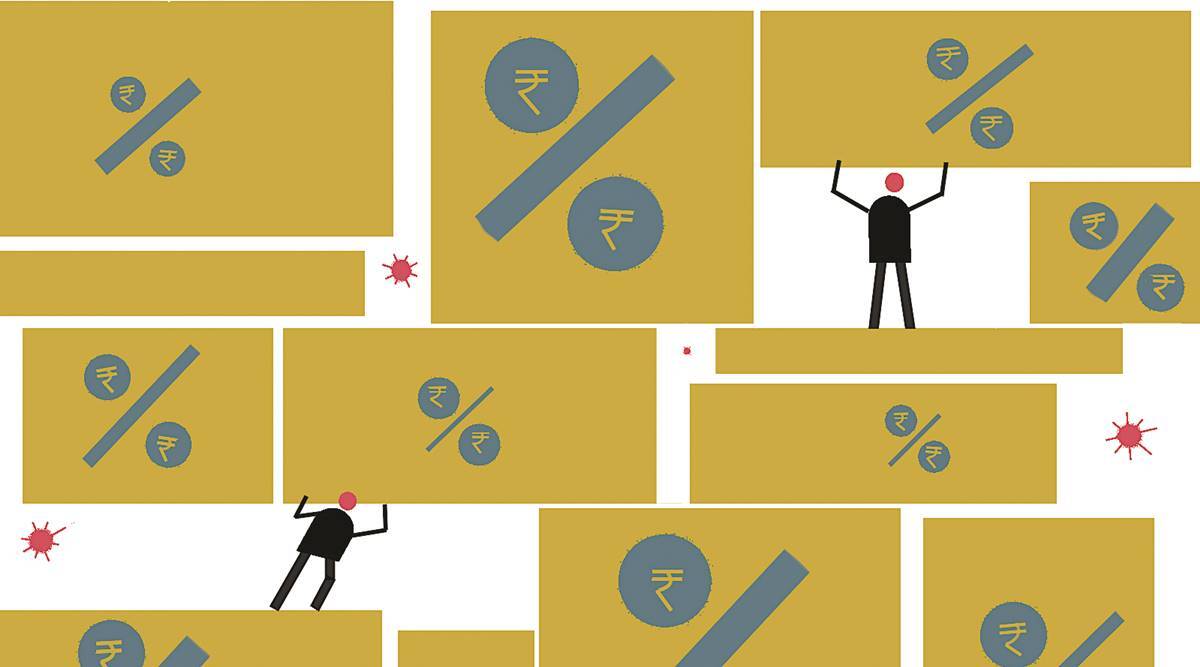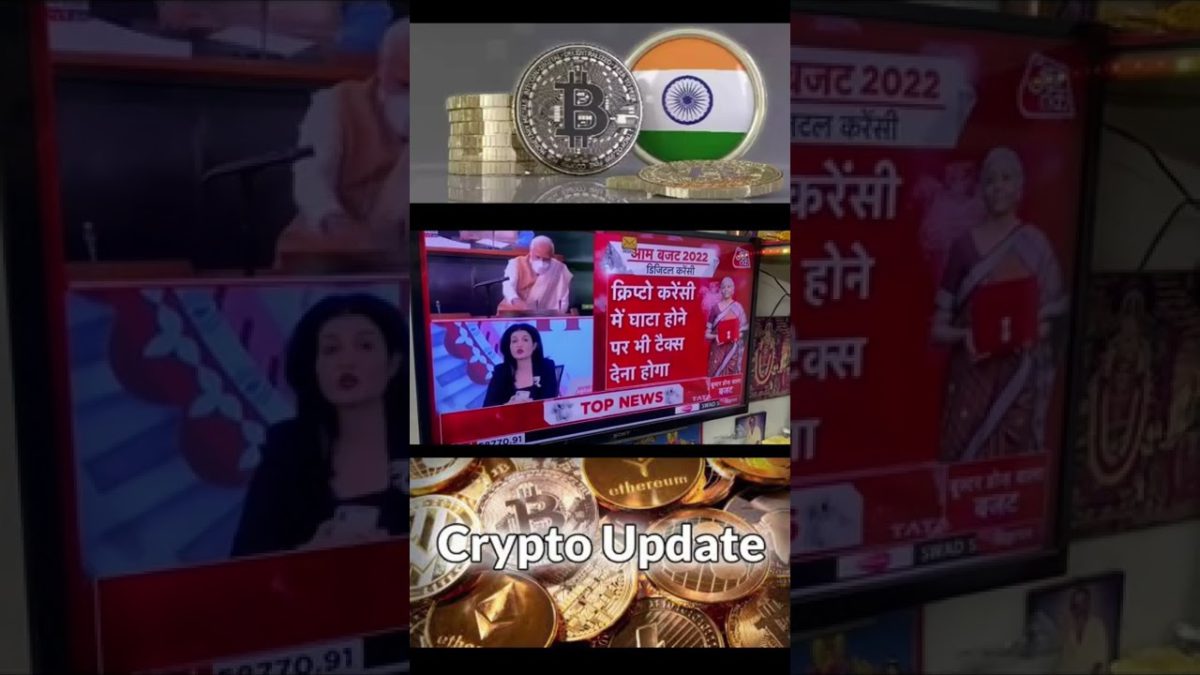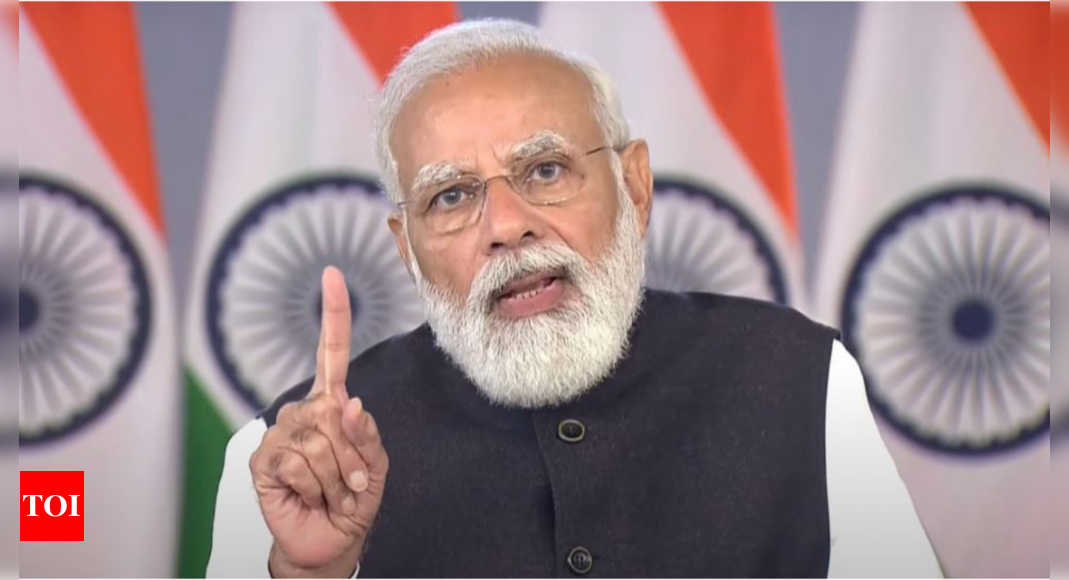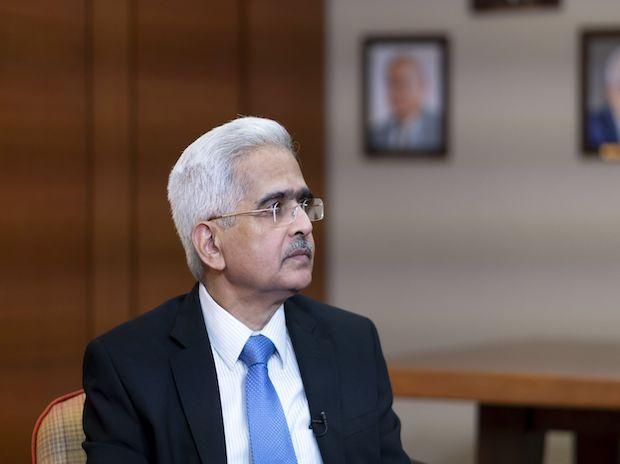Shah explains why he is confident about India being a “long-term growth story” and why markets will “continue to correct”, says he doesn’t believe RBI will increase interest rates to a level where it derails growth, and calls for regulation of cryptocurrencies. This session was moderated by Associate Editor Sandeep Singh.
Sandeep Singh: From a peak of around 62,200 a couple of weeks ago, the Sensex lost around 5% or 3,000 points over the last week. How do you see this and do you expect to see the correction continuing?
In the near future, I think the corrections will continue. However, every correction is an opportunity to buy into the market. I believe, in the market, there is a red zone and a green zone. In the red zone are stocks, where floating stock is limited and there is a concentrated holding. That concentrated holding allows people to put any price on those stocks. Now at some point of time, the law of gravity will apply and those stocks have got corrected. Second, in every bull run, we see operators pull up prices of, let’s say, penny stocks. Some of them have gone up as high as 8,000 per cent, some 4,000 per cent and some by 500 per cent. Now all these stocks too have to come to an end. And generally, they make the top of the market. So we are seeing more correction in this red zone than in the green zone. The momentum of the market now is a bit negative. It will take some time to correct and consolidate it.
Sandeep Singh: What makes you confident that markets will rise in the medium-term?
Let’s get a slightly long-term view. In the pre-90s, the villain in most of our Hindi films was a black marketeer — Roti Kapda aur Makaan, Kalicharan and so on. We have shifted from double-digit inflation to mid-single-digit inflation. That is a big change in the economic fundamentals of India. Pre-1990, we were always short of foreign exchange reserves. Fast forward to 2021, we have a$636-billion reserve… For most of our 75 years, we were an infrastructure-deficit economy. Now we are becoming an infrastructure-available economy. Our power consumption has gone through the sky, but are also able to produce power. We are also moving from physical to physical-digital infrastructure. Today, in a developed world, if you want to transfer money from one bank to another bank, it is a seven-day job. In India, it is happening instantly, thanks to RTGS and NEFT, among others. Earlier, we were a capital-constrained economy; not any more. Also, public-private partnership is emerging. From the government running all the businesses to the government saying that we have no business to be in business, is a big mindset change. Air India, BPCL, IDBI, LIC, Container Corporation, Shipping Corporation, Neelachal Ispat — if all these things get divested, then imagine the benefit this country and the economy will get.
All this is changing India like never before. Have we achieved everything? No. It is a work in progress. We need to bring rule of law in the country. We pass a law which says that if your cheque bounces three times, you will go behind bars. What have we achieved in reality? Forty lakh cases of cheque bouncing are clogging up the judicial system. This cannot work. An entrepreneur will invest when he is convinced that there is the rule of law. We have to reform our judicial infrastructure. Also, when you are trying for economic growth, you are labelled as suit boot ki sarkar. Our whole focus is on dividing the pie and getting equality rather than expanding the pie even with inequality… You can’t become a prosperous country until you respect business…
We were growing at mid-single digit, now we have laid the foundation for a higher single-digit growth and that is giving investors the confidence that now India is a long-term growth story.
Sandeep Singh: The current stock market rally has continued for 15 months despite issues of job losses, loss of life, impact on businesses. The common refrain is that the stock market is delinked from the economy.
Stock market could have been delinked from the economy for a while, not for 18 months. We saw that kind of madness during the Harshad Mehta, Ketan Parekh times… Today, can someone take out money from the banking system and put it in the stock market? No. At that time, the average PE (Price to Earnings) of the market was 40, today we are at 20. At 20 PE, how can one say there is a bubble? In 2008 too, we saw correction but that was driven by sub-prime. But it is unlikely that we are seeing a sub-prime kind of an event. I wouldn’t say markets are delinked from the economy; I would instead say they are optimistically discounting the future and if that future is not delivered, there will be correction. But there will not be any crash in the market because even if the 20 PE comes down to 15 PE, people will go to buy. Unless a sub-prime kind of an event happens, where all FPIs (Foreign Portfolio Investments) decide that they have to move out, I don’t think markets will crash. They will undoubtedly correct. And right now, we are in a negative momentum, but markets most likely will not crash like 2008 or 2020.
George Mathew: Why do we see many more retail investors jumping onto the stock market bandwagon? Does the RBI’s accommodative policy have a part to play in increasing liquidity?
Where will the retail investors deploy money? Can they buy real-estate? It is a big-ticket investment. Bank deposits will get them 3-5%. Gold and silver had negative returns last year. So where will you put your money? By definition, it is equity. And they have seen their neighbour making money so they have also jumped onto the bandwagon. Not all retail investors are blind followers. There is a fair amount of mature investors who have been investing in the stock market through its ups and downs and have been building up their positions in equity because interest rates are so low in other places. Is RBI’s accommodative policy fueling the equity market rally? The credit growth in the economy does not suggest that the liquidity that the RBI has built up has moved to retail investors. I don’t think credit growth is 30-40 per cent, where I need to be concerned. So RBI has excess liquidity in the system but unfortunately, it is only moving from the banks to the RBI and vice-versa. It has not moved from the RBI to banks to the customers. This is mine and your savings getting invested in the market. People have started taking increasing exposure because of low interest rates and the last 18 months’ positive experience of making money.
Sandeep Singh: A lot of FPI money is flowing into the market. How does it translate into change in the real economy for sectors such as healthcare, education?
Digitisation of education is our solution to the shortage of quality teaching. There will be stories of children not having electronic instruments or good network coverage. But at least with digitisation I am able to cover 10-50 per cent of the population. Without that, no one will be covered. So you have to see if the glass is half full or half empty. In healthcare, we have seen top-of-the-line consultancy being provided in whichever part of India you are in… Digitisation is changing the way things are moving and more importantly, for ideas, capital is available… Capital availability is helping them expand at a much faster rate. Byju’s without global capital could not have reached where it is.
George Mathew: There is speculation around the world about interest rates rising again. In India, do you think interest rates have bottomed out? When will they start rising again?
In September 2020, we said RBI will raise interest rates by March 2021. In March 2021, we said RBI will raise interest by September 2021. In September 2021, we are saying RBI will raise interests by March 2022. Today, India’s CPI inflation at 5.3 per cent is the same as the US’s. Our interest rates are at 6.3 per cent, 100 basis points real, their interest rate is 1.7, it is negative. RBI has managed our monetary policy significantly better than other countries. They have ensured that liquidity remains absorbed, interest rates remain under check, the borrowing programme of the government goes through, the financial market remains stable and functioning. At the same time, inflation and growth rate remain supported. I don’t think we could have got a better RBI Governor than Shaktikanta Das. Rates will rise in India and globally, but not as much as the market is fearing. I don’t think central bankers are going to increase interest rates to a level where it derails growth. They will raise so that inflation remains under control but post that, they will again support growth. Today, we have $636 billion of reserves, positive interest rates, our inflation numbers are well under control. Put all this together, rates will rise, but it will not rise to derail growth.
Sunny Verma: The government is pushing ahead with a giant privatisation plan… they plan to privatise two banks. Should we allow industrial houses and corporate houses entry into banks?
We, as a democracy, do not have the screening process where only good people get the license… We open the gates for everyone and then keep on tightening the screws…. You need a good screening process to give licenses to good people and have strict boundaries… It is ironic that the ADR shareholders of Satyam have been compensated but the Indian shareholders have got nothing. Isn’t it a shame that for a crime committed in India, the compensation is paid in the US? Our regulators, judicial system should be ashamed of it.
Sandeep Singh: Since you bring market intelligence to the table, has there been any discussion within the government on crypto currency?
I believe regulators are working on it. There will be some regulation. Cryptocurrencies are becoming too big to ignore now. It is more of a semi-urban and rural phenomenon. In Tier 2 towns, it’s spreading like wildfire. I am not qualified enough to say if crypto is a fraud or not… who knows, it may be the future and we are early entrants. So why not regulate and make people aware that this is high-risk, high return? So that tomorrow if it goes out of hand, it does not jeopardise many investors.
George Mathew: The RBI Governor recently spoke about the need to tighten the auditing process. His observations came after three major financial groups collapsed in the last 2-3 years. Do you think the auditing process is weak in corporate India, especially the financial sector?
This malaise is not only in the auditing profession. For an investor, there are six layers of protection. The first is the management… If you look at the Bernie Madoff scandal — that was a US $60 billion scandal, but the actual money was $18 billion. Out of that, Irving Picard (a court-appointed trustee for the liquidation of Bernard L Madoff Investment Securities) recovered $16 billion. How did he recover? Madoff’s, his wife’s, son’s every piece of property was sold — shares, bonds, investment, personal items, everything… Madoff had to submit any spending above $100 to Picard… Now look at the cases in India. You have to go after the management… that’s not happening here. Then comes the Board of Directors. But how many are discharging their job? Then comes the auditor. Now there are a few very good auditors. In the pre-90s, Y H Malegam refused to sign the balance sheet of a leading textile company. How many such CAs have we seen? Very few. Then comes the rating agencies. The rating agencies which gave AAA rating to Dewan Housing Finance Limited have a lot of introspection to do. Then comes the investors. Our jobs is to keep the management and companies on their toes on good governance. Finally come the regulators and judicial authorities. All of them have to work together to ensure good governance.
Sandeep Singh: While there’s optimism over the future, over the last one and a half years, there have been a lot of job losses. MSMEs lost businesses to listed companies. What’s your prescription for a more inclusive growth?
Let me give you the example of when SMEs have worked well. You would have heard of Morbi, a town in Gujarat. There was a dam burst in the 80s and the entire town was flattened. Then Morbi started coming up by making tiles. They initially used coal to make tiles, but the pollution levels rose and the HC ordered that they switch to natural gas. But that switch from coal to natural gas meant that the entire industry became formalised — unlike coal, natural gas couldn’t be bought in the black market. Then, the units there began focusing on improving quality. With LPG or CNG burning, you will know how many tiles you have produced. Then they focused on quality, on economies of scale. Some focused on becoming contractors, some on the export market. Today Morbi exports 7,000 crore worth of tiles. There was a fear that Chinese tiles would invade the market; instead, they compete with China in the Middle East etc. All this happened because you formalised MSMEs. From tiles, Morbi moved to clocks. World’s largest clock manufacturer Ajanta is based in Morbi. Then, calculators… Orpat is a Morbi-based company. This is the model for us. Another such model is Tirupur in Tamil Nadu… How do we ensure formationalisation of MSMEs? When you are evaluating MSMEs, you have to allow market forces to work.
A corollary to that is Amul, which brought millions of farmers on a formal platform. Now that is a cooperative model, while Morbi is a private model. Sitting in Delhi, I can’t decide the model to revive MSMEs. Market forces at the local level will have to do what is right for the industry.
Sunny Verma: We saw the US taper tantrum in 2013 and saw how the jerky policy announcements impacted markets. Now people have been saying the impact of such a tantrum on emerging markets could be 10 times what it was then.
People become wiser from experience. What happened in 2013? Ben Bernanke talked about taper tantrum to warn markets. That warning itself created a correction in the markets because some people panicked. All those people who sold in 2013 became wiser because when the taper tantrum actually began, there was no correction. In fact, markets went up. All those people who bought despite Ben Bernanke warning, will buy 10 times what they bought then because they made a lot of money. So will people be as stupid as in 2013? No. Secondly, in 2013, India was dependent on FPI to a much more extent than what it is today. Third, in 2013, China was competing with India to collect FPI inflows. That’s no longer the case. More importantly, if the taper tantrum starts at 21,000 Nifty, of course there will be correction, but what if it begins at 15,000 Nifty? There’ll be no effect then.
Sandeep Singh: You spoke of certain changes in India over the years when it comes to economics, inflation, infrastructure. Have these set off any changes in the political economy?
By and large, most parties are focused on economic issues. But unfortunately, Opposition parties and the ruling party may have a stand on a particular issue, but when their roles reverse, they also change their stand. For instance, Air India should have been divested when it had a monopoly over the Indian skies. We would have got some much more money if it had been divested then. Similarly, MTNL-BSNL. How to make decisions that make economic sense? That’s our biggest challenge. This political process has to evolve. We as citizens also have to realise that there will be short-term pain for long-term gain. Mis-allocation of capital is the real challenge.
Sandeep Singh: We hear of a lot of Centre versus state issues. How do you look at this?
The states and the Centre have to work together, there is no choice. We are a federal structure. If the Central government opens the door… right now, we have this great opportunity of China Plus One. Because of Wuhan, because of China’s acrimony with others, every country that has a base in China is looking to diversify. All the countries in the world, including India, are chasing that investment. Even if the Centre makes this image of the country, invites manufacturers to be in India, builds highways, builds dedicated freight corridors, at the end of the day, the factory will be run in the state jurisdiction. The local administration will have to support it. Then we will be able to capture this China Plus One. If we don’t work together, the opportunity will be missed like in 1980.
Sandeep Singh: Do you see rising commodity prices as a threat to growth?
Commodities are a cycle — they go up and down. I have to create an economy that’s insular to commodity price movement. Today, India has moved in that direction. Our IT exports are more than Saudi Arabia’s oil exports. Our remittances plus software combined gives us an edge to manage rising commodities prices. As oil prices go up, there is an impact on the economy, undoubtedly. But by pushing my IT exports, remittances, I can neutralise it to an extent.
Shubhajit Roy: You spoke about people and economies becoming wiser with experience. With the benefit of hindsight, how would you look at demonetization?
Demonetization had its positive and negative effects. The negative effects were felt on MSMEs. But the positive effect was on digital adoption as a lot of payment models evolved. Now one intended benefit of demonetization didn’t come through, not because the government failed, but because citizens failed. When demonetization happened, we hoped people would not put the black money into their accounts, that they’ll take the hit on their balance sheet. Unfortunately, people found many ways to convert black money into white and deposited that bank into the banking system.









 Dear Reader,
Dear Reader,





